Fish ranks as one of the most highly traded food commodities and fuels a $362 billion global industry[1]. In Canada alone, we export $7 billion worth of fish and seafood[2]. This makes seafood the largest single food commodity in our economy with 72,000 Canadians making their living directly from fishing and fishing-related activities[3]. In addition, over 1 billion people worldwide depend on seafood as their primary source of protein[4].
Clearly, fishing is important both for supporting livelihoods and as a source of food but, with the UN’s Food and Agriculture Organization (FAO) stating that 90% of the world’s fish stocks are now fully fished or overfished[5], it appears that the fishing industry, and peoples’ jobs and food sources are at risk, unless we take real steps towards making fishing more sustainable.
In this part of our sustainability series, we’re looking at sustainable fishing. What is it? What are the problems with the fishing industry currently and how can we improve the situation to ensure that fishing stocks are still bountiful for future generations?
What is sustainable fishing and why is it important?
If you’ve been following our sustainability series, you’ll know that there are generally considered to be three parts to sustainability: economic, social and environmental. Sustainable fishing is no different. The Marine Stewardship Council defines sustainable fishing as: “Sustainable fishing means leaving enough fish in the ocean, respecting habitats and ensuring people who depend on fishing can maintain their livelihoods.”
Maintaining fish stocks in the future means those reliant on fishing for their livelihood can continue to do so, that the countries who rely on fishing exports for their economy will still be able to benefit. Importantly to maintain the social and economic benefits of fishing, the methods need to change to prevent overfishing and damage to our aquatic ecosystems.
The problems with the fishing industry
Fishing hasn’t always been unsustainable. Indigenous communities across the world have been fishing sustainability for centuries using methods such as spearfishing. Today’s sustainable fishing practices reflect some lessons learned from these cultures.
Increasing global demand and consumption of fish has led to fishing methods changing to catch the most fish with the least effort. These fishing practices have led to some of the issues we’re looking at below.
Overfishing
The biggest, and most well-known, problem with the fishing industry is overfishing.
Overfishing refers to catching too many fish of the same species consistently that that species’ survival is put at risk. It often happens when demand for a particular fish grows, increasing the capture of that species as the fishing industry looks to capitalize on the increased price.
Though many regulations have been put in place to try and limit overfishing, it takes time for a species to fully recover, and, in the meantime, they’re still being fished.
Bluefin tuna, a fish most of us will be aware of, is one example of the consequences of overfishing. Today’s spawning population of bluefin tuna is estimated to be at just 21-29% percent of what it was in 1970[6].
Illegal fishing
Illegal fishing, unregulated and unreported (IUU) fishing is another issue facing the fishing industry and undermining its sustainability efforts and is estimated to be worth US$10-23.5 billion annually[7].
IUU contributes to the problem of overfishing and may involve catching a species that shouldn’t be caught or catching a species in too high a number.
While there are regulations and legislation on waters closest to land, not all the world’s seas are governed as they lie outside of the control of one nation’s borders. In the case where international agreements apply, regulation is tricky as the prime fishing location may be many hundreds of miles away from land.
Destructive fishing
Destructive fishing refers to the methods that are used to catch fish. They can present a real danger to the environment and the future of aquatic ecosystems.
Some methods of destructive fishing include bottom trawling, where giant nets are run along the seafloor picking up anything in their path including fragile corals and sponges[8]; cyanide fishing where sodium cyanide is squirted into the water to stun fish and make them easier to catch. There’s also dynamite fishing involving explosives being detonated underwater and collecting dead fish that rise to the surface[9]which comes with issues when done on a large scale
What’s being done?
In recent years, there has been an increase in awareness of overfishing and illegal fishing issues. There are certifications we can look out for on packaging and when we’re out at restaurants and more international agreements have been put in place.
International agreements
International agreements that have been put in place to limit bycatch and overfishing have shown some success in reducing damage.
Canada is part of several Regional Fisheries Management Organizations (RFMOs) – agreements between nations that share interests in a particular area – and evidence suggests that agreements such as these have helped reduce the number of dolphins caught in tuna nets as bycatch[10]. However, maintaining healthy fish stocks still proves a challenge.
The North Pacific Anadromous Fish Commission (NPAFC) was set up to preserve salmon stocks. It’s composed of Canada, Japan, South Korea, Russia and the United States and prevents fishing companies from catching salmon on the high seas (international waters) using drift nets which tend to catch a lot of bycatch. There has been enforcement success under this commission which demonstrates enforcement can be achieved; even though it may be difficult.
Sustainable seafood certifications and recommendations
The easiest way for consumers to make an impact and help promote sustainable fishing is by looking for certifications or recommendations on the products we buy and eat.
The Marine Stewardship Council (MSC) Fisheries Standard assesses whether wild-caught and farmed fish are sustainable. The MSC has developed its standards of certification through working with scientists, the fishing industry and conservation groups. The assessment process is then carried out by independent contractors and, if the standards are met, a fishery can certify its catches with the MSC label[11].
Buying products with this label mean you can enjoy seafood knowing that you’re supporting sustainable catches.
Another thing to look for is the Ocean Wise symbol which appears on menus. Where you see this symbol this signifies Ocean Wise recommended seafood.
Try other fish types
Another way consumers can contribute to improving the sustainability of the fishing industry is to try different types of fish.
Ocean Wise has put together a Master Seafood List that shows which species are the most sustainable and which to avoid.
Look for recipes online and who knows, maybe you’ll find a new favourite!
Summary
Fish remains an important source of protein and income for millions of people across the world. However, our current consumption and fishing techniques are often deemed unsustainable.
Overfishing is the biggest problem facing the industry as it diminishes fishing stock to a point where it’s hard for them to rebound to keep up with demand. Combined with illegal fishing and damaging fishing techniques, this problem is intensified.
As consumers, looking for MSC’s blue label, and Ocean Wise’s sustainable seafood logo on seafood products are some of the easiest ways to make sure we’re contributing to the sustainable fishing economy.
Read the other posts in our sustainability series:



